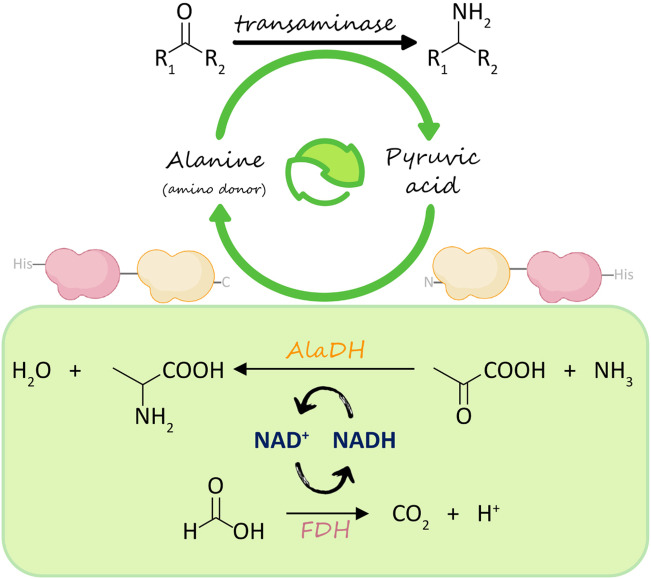CD Biosynsis is a leading expert in the field of enzyme design and evolution, with a long and in-depth experience in enzyme directed evolution. Our professional research team aims to combine the catalytic structural domains of different enzymes through enzyme fusion design to alter enzyme functions and provide valuable insights for the rational design of enzymes with improved properties or novel functions.
Overview
A report gene is a group of genes that encode proteins or enzymes that can be easily detected. The coding sequence of a report gene is fused with a gene expression regulatory sequence, and is expressed under the control of regulatory sequences, so that the expression products of the report gene can be detected to "report" the expression regulation of the target genes. Enzyme-reporter fusions are commonly used in bioluminescent assays for the detection and quantification of specific biochemical or biological events. Bioluminescence assays typically require the expression of a fusion protein that binds a luciferase enzyme to a target protein or associated promoter.
 Fig. 1 A fusion protein combining alanine dehydrogenase and formate dehydrogenase. (Marchini V., et al., 2022)
Fig. 1 A fusion protein combining alanine dehydrogenase and formate dehydrogenase. (Marchini V., et al., 2022)
Our Services
Our EnzymoGenius™ platform provides enzyme fusion design services that enable researchers to better conduct enzyme engineering studies and applications.

- Selecting the Luciferase Enzyme
- Choose a luciferase enzyme suitable for specific application. Commonly used luciferases include firefly luciferase, renilla luciferase, and gaussia luciferase.
- Consider factors such as sensitivity, stability, and substrate requirements.
- Identifying the Target Protein or Promoter
- Identify the protein or promoter region to be studied or quantified.
- Ensure that the fusion of the luciferase enzyme does not interfere with the function of the target.
- Designing the Fusion Construct
- Design a fusion protein where the luciferase enzyme is genetically fused to the target protein or promoter.
- Use appropriate linkers to connect the luciferase and the target without affecting their activities.
- Optimizing Signal Output
- Optimize the position of the luciferase enzyme within the fusion for maximal signal output.
- Experiment with different fusion protein orientations to enhance luminescence.
- Constructing the Fusion Gene
- Synthesize or clone the fusion gene into an appropriate expression vector.
- Use suitable promoters and terminators for expression control.
- Transfect the fusion construct into the cells or organisms of interest.
- Choose a cell line that is compatible with the assay requirements.
- Quantification and Analysis
- Quantify luminescence using a luminometer or other appropriate detection equipment.
- Analyze data using appropriate statistical methods.
Common Reporter Genes
- Luciferase
The luciferase gene encodes a 61 kDa enzyme that oxidizes D-luciferin in the presence of ATP, oxygen, and Mg2+, producing a fluorescent product that can be quantified.
- Chloramphenicol acetyltransferase (CAT)
CAT catalyzes the acetylation of chloramphenicol with an acetyl group provided by acetyl CoA or by n-butyryl CoA in commercial analytical kits.
- β-galactosidase (β-gal)
β-gal catalyzes the hydrolysis of β-galactose, used as a substrate for standard β-ga1 analysis, and is commonly used as an internal control for luciferase reporter genes and CAT reporter genes.
- Secreted Human Placental Alkaline Phosphatase (SEAP)
An important advantage of SEAP is the ability of the reporter protein to be secreted into the culture medium without lysing the cells to detect protein activity.
- Green Fluorescent Protein (GFP)
GFP is a 28 kDa protein isolated from jellyfish. GFP contains an endopeptide chromophore that emits green light when oxidized and excited by ultraviolet or blue light, and the light emitted can usually be detected in intact cells.
CD Biosynsis strives to provide comprehensive and reliable enzyme fusion design services for a variety of applications. Contact us now to learn more about our enzyme fusion design services and how they can benefit your research or development program. Our team is ready to assist you and provide the insights that you need to achieve your goals.
Reference
- Marchini, V.; et al. Fusion of Formate Dehydrogenase and Alanine Dehydrogenase as an Amino Donor Regenerating System Coupled to Transaminases. Chembiochem. 2022, 23(21):e202200428.

































 Fig. 1 A fusion protein combining alanine dehydrogenase and formate dehydrogenase. (Marchini V., et al., 2022)
Fig. 1 A fusion protein combining alanine dehydrogenase and formate dehydrogenase. (Marchini V., et al., 2022)